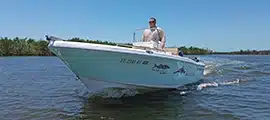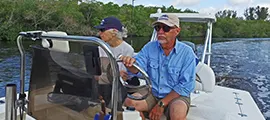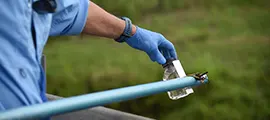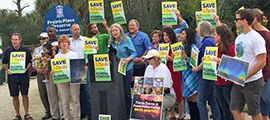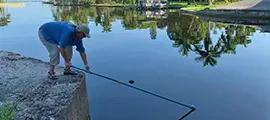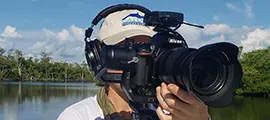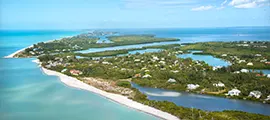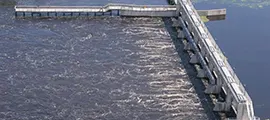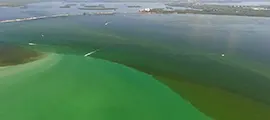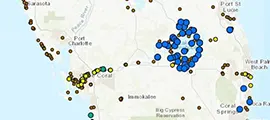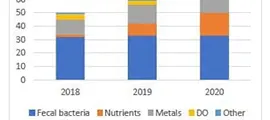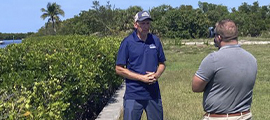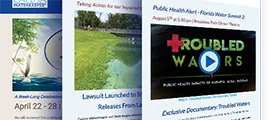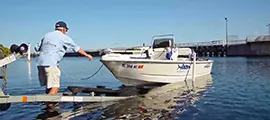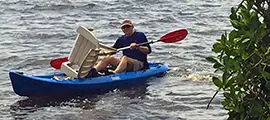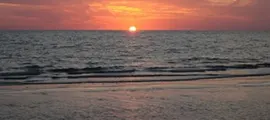Originally published on Fox4 by Andrew Shipley on August 8, 2025
Sea grass, along with oysters and mangroves, are the drivers for health of waterways in our Southwest Florida community. The more they thrive, the cleaner our important estuary will be.
Through Florida Sea Grant’s Eyes of Sea Grass program, we’re getting a picture of the health of these vital underwater plants.
“Sea grasses are a very important habitat for fish and invertebrates. It’s a very important feeding ground,” said Joe Cavanaugh, Calusa Waterkeeper.
Throughout the month of July, Calusa Waterkeeper, Heal Our Harbor and the FGCU Water School worked in collaboration to visit 23 sites across Pine Island Sound, Charlotte Harbor and Estero Bay.
“There were more sea grasses than I thought with the sites that we went to, but these are targeted sites,” Cavanaugh said.
Despite seeing more than he anticipated, Cavanaugh says large amounts of legacy nutrients in our estuary mean these sea grasses are competing with macro algae for sunlight.
“Those nutrients create competitive imbalance with macro algae that starts to crowd out the sea grasses,” Cavanaugh said.
Cavanaugh says our sea grasses are also seeing threats from the amount of boat traffic we have in Southwest Florida, causing sea grass bed scarring.
“You may or may not give a competitive advantage to different sea grass or you might not have sea grasses there for a long time,” Cavanaugh said.
Full Story
